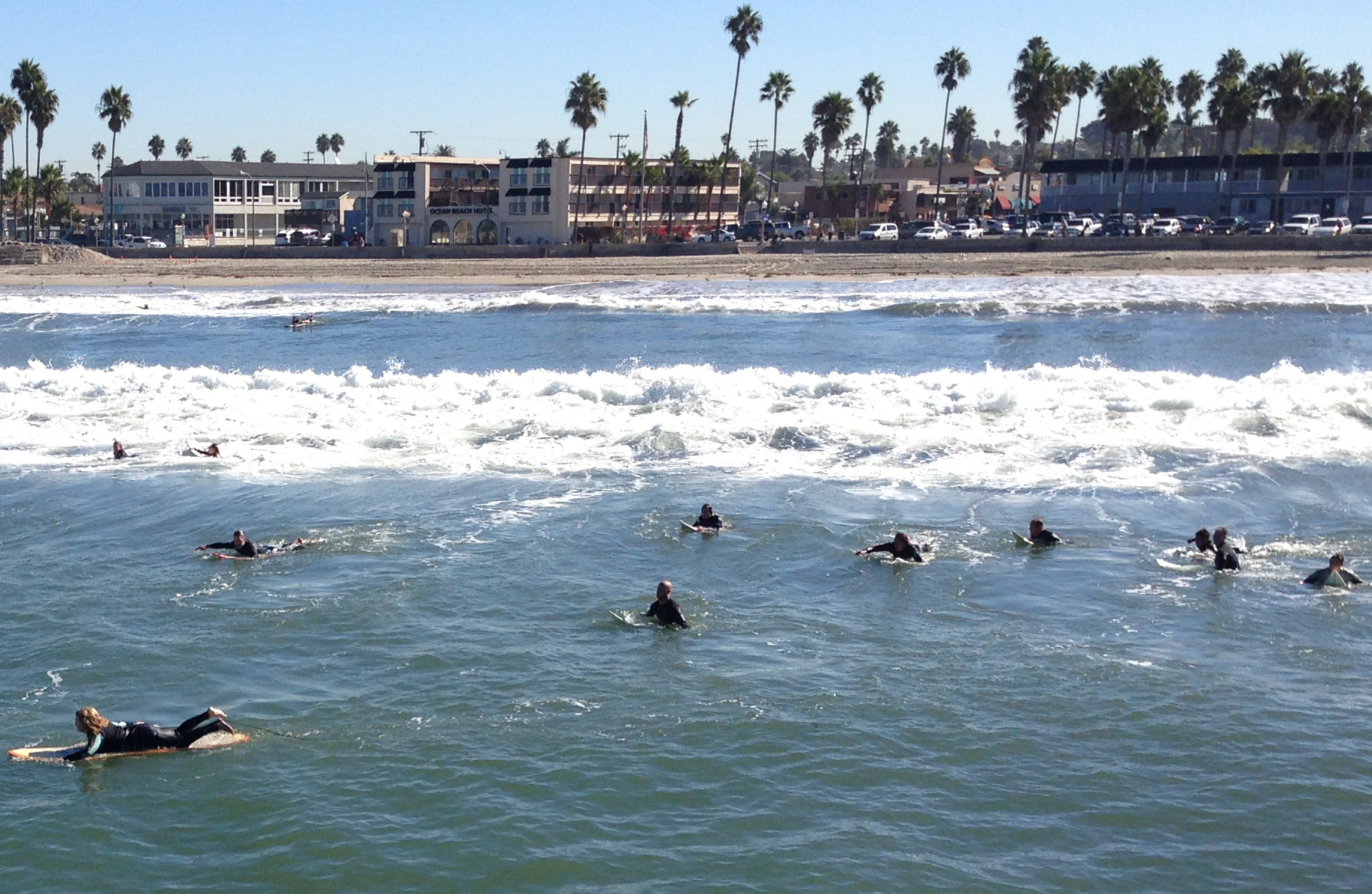For years, stormwater managers have been using the genetic marker HF183 to detect human-specific sources of fecal contamination in runoff. The HF183 measurement data have played a key role in helping managers to identify and prioritize contaminated water bodies for further study and clean-up actions.
But what the data historically haven’t been able to do is shed light on how much HF183 is too much HF183 – that is, at what level HF183 in wet-weather runoff corresponds to an elevated illness risk for people swimming in contaminated receiving waters.
A newly completed SMC study has helped close this critical knowledge gap.
The three-year study, published earlier this year as a pair of journal articles* (link and link), found that 100 gene copies of HF183 in a 100-mL sample is the threshold, or inflection point, at which a water body with contaminated stormwater is deemed unsafe to swim in.
By contrast, an estimated 557 gene copies per 100-mL sample are present on average during wet weather in southern California coastal watersheds. What this means is that wet-weather runoff in southern California, on average, would need to be diluted about 5.5-fold to fall within the safe-to-swim range established by the U.S. Environmental Protection Agency.

Translated into illness risks, the fecal contamination levels that researchers measured in southern California runoff correspond to a predicted average of 190 gastrointestinal illnesses per 1,000 swimmers. The EPA-approved health risk threshold is 32 illnesses per 1,000.
The SMC’s health risk modeling study represents a key scientific advance, giving managers critical context for interpreting their HF183 measurement data and taking appropriate actions to protect public health.
Although previous studies also have estimated illness risks based on HF183 measurements, and although these studies arrived at different numerical estimates than the SMC study did, many of these studies were desktop modeling exercises that did not involve field data collection – and were focused on sewage spills instead of contaminated stormwater.
The SMC study included two years of wet-weather data collection across 31 watershed sites across coastal southern California, and took advantage of recent advances in droplet digital PCR (polymerase chain reaction) technology to directly measure six common pathogens – three bacterial and three viral.
Already, the SMC is developing a follow-up study that will bring together decision-makers and practitioners to evaluate how to assess HF183 threshold exceedances (e.g., how many samples, how many locations, how many storms) and what are the appropriate management actions to take upon identifying an exceedance.
HF183 is not itself a pathogen, but is more practical for managers to routinely monitor in runoff than pathogens themselves.
Dive deeper
- What is HF183, and why is it used to detect human fecal contamination?
- Limitations of previous efforts to determine how much HF183 is too much HF183
- Link and link to the pair of Environmental Science: Processes & Impacts journal articles summarizing the study*
- SMC study workplan: Human Fecal Indicators and Health Risk
- SMC 2021-2022 Annual Report feature article on the SMC’s contributions to fecal contamination management (see Page 4)
*Note: These journal articles are behind a paywall; however, the authors can share their personal copy upon request. To request the full text of these articles, contact pubrequest@sccwrp.org.
SMC Summer 2025 Newsletter
Volume 6, Issue 1
This newsletter is published three times a year by the Southern California Stormwater Monitoring Coalition (SMC). To subscribe to this newsletter, contact inquiries@socalsmc.org.
